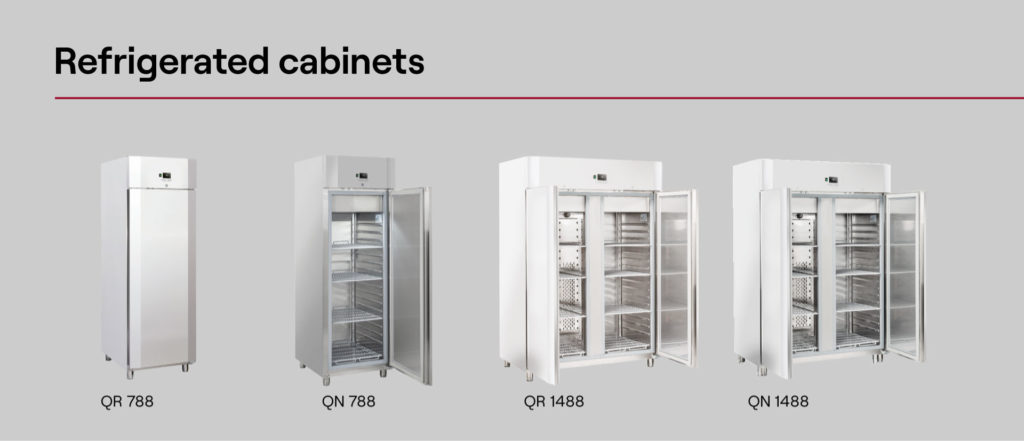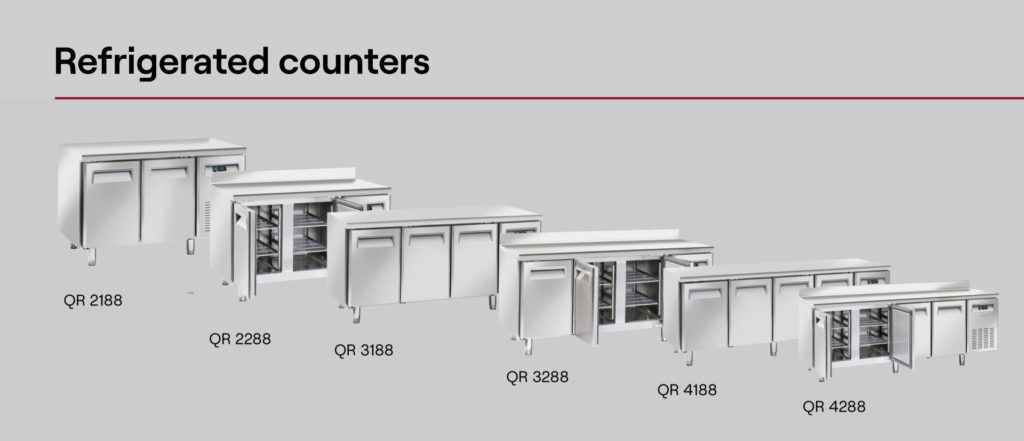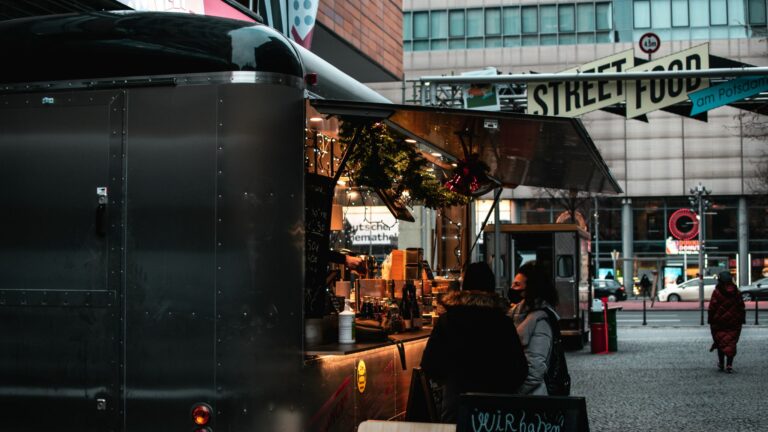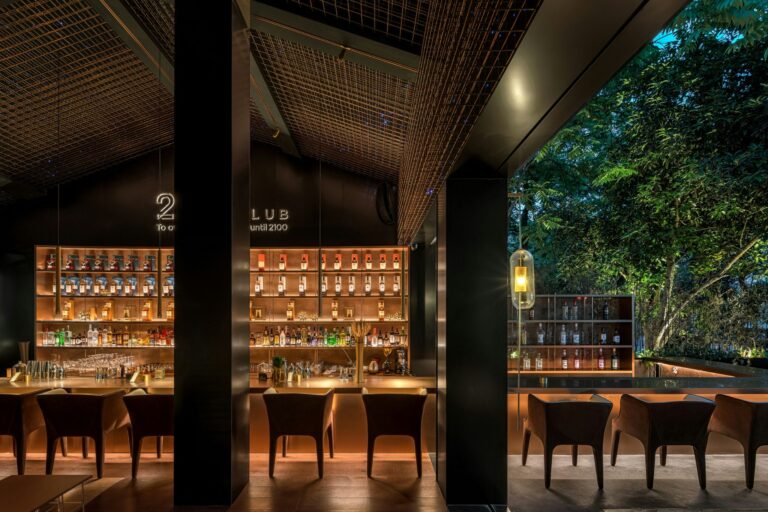Smart refrigeration equipment helps you save time and improve your business’ profitability
IoT (Internet of Things) technology is becoming increasingly prevalent in the hospitality industry. By using the technology, restaurateurs are able to save time and improve their profitability while making their lives easier. The Internet of Things has arrived to revolutionise the day-to-day tasks in a professional kitchen and it is here to stay.
Nowadays, controlling and monitoring your professional kitchen equipment via Wi-Fi connection is a reality. Once the equipment is connected to it, it is possible to switch the equipment on or off remotely, record its operating data or detect any incident in the system and much more. All that is required to make use of these functionalities is a mobile phone, tablet or computer which is connected to the device.
Therefore, professional equipment (display cabinets, refrigerated tables, blast chillers, etc.) have become a set of smart devices capable of communicating with each other, helping improve workflows and obtaining better results with greater efficiency in the kitchen. To connect their kitchens, food service professionals must follow some basic guidelines:
- Choose equipment that shares the same language, using the same communication solutions.
- Choose the best technology that is both simple and intuitive for kitchen staff.
- Convert the huge volume of data achieved by IoT-connected equipment into useful and actionable information to achieve the best results.
What are the benefits of connected equipment?
There are many benefits to choosing connected equipment to equip a professional kitchen. Let’s get to know them in more detail:
- Time saving: connected appliances interact with each other. This means that they don’t require any person to intervene in the process, so the staff can save this time and focus on other tasks.
- Streamlined workflow: through the use of connected equipment procedures can be streamlined, increasing the efficiency of the cooking process.
- Less dependency on people: as employees don’t need to take care of specific operations, human errors are reduced. Moreover, the staff doesn’t need to waste time on repetitive tasks that are not adding value.
- Cost saving: through the monitoring of the temperature we can control the consumption and reduce the electricity bill.
- Visibility and control over kitchen operations: we can oversee kitchen processes on one platform from anywhere.
- Cost-efficient repairing: in case of a misfunctioning of the equipment, technicians can undertake the first analysis remotely. Thanks to this, they are able to choose the right spare part before they visit the restaurant/shop, saving money and time.
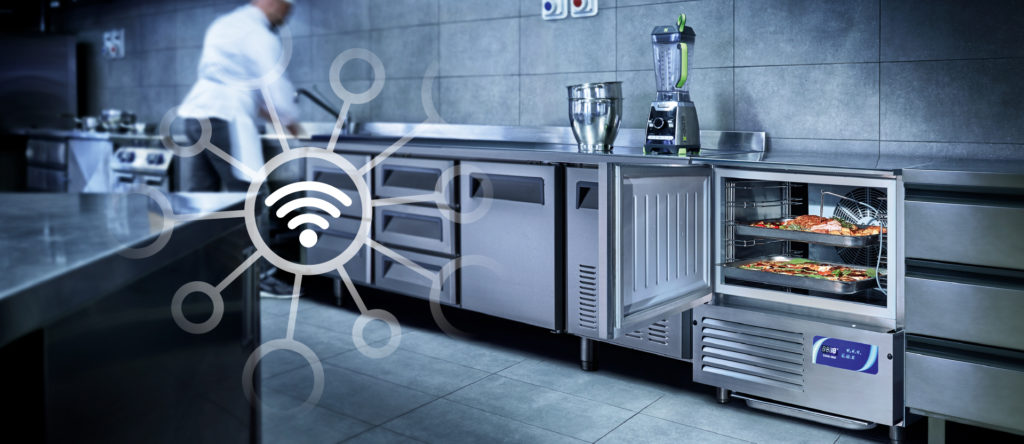
Food safety for product traceability
IoT technology can also increase and improve product quality and even prevent food safety issues. Some establishments already use IoT sensors to measure temperatures in fridges or display cabinets and issue warnings if a certain temperature is exceeded, such as a break in the cold chain for meat or fish.
This is a great advantage for kitchen managers, who normally rely on the usual systems such as labels for manual control. This way, temperature recording is done automatically, which not only saves time, but also avoids any inconvenience related to food safety.
What equipment is available with this technology?
Now that we know the advantages of a connected kitchen, the next step is to understand and evaluate what equipment we can acquire to enjoy all its benefits.
There are several pieces of equipment that we need for the proper functioning of a professional kitchen, but there are three that have a direct impact on energy consumption and on avoiding food waste. We are talking about refrigerated cabinets, refrigerated tables and blast chillers.
In order to accompany restaurateurs on the road to connected kitchens, at Rightway Asia we have launched new models of blast chillers, tables and refrigerated cabinets with a high-tech temperature control system.
This system allows you to control and monitor the refrigeration unit through a Wi-Fi connection. Once the equipment is connected to it, it is possible among other things to switch the equipment on or off remotely, record its operating data, and detect any problems in the system.
By choosing these models, the professional kitchen staff can start implementing improvements to achieve greater efficiency in the restaurant. The product range is very diverse, so it can be adapted to different types of hospitality projects, from large installations to smaller bars or cafés.
As for cabinets, you can choose between different models according to your needs. We offer four different models of connected professional refrigerated cabinets: two for storage and two for freezing with one or two stainless-steel doors (QR788, QN788, QR1488, QN1488).
In the case of refrigerated counters, there is a choice of six different 2, 3 and 4 door counter models with this technology (QR2188, QR2288, QR3188, QR3288, QR4188, QR4288).
This can also be complemented with an essential piece of equipment: the blast chiller. Its main use is to chill food in a short time by lowering the temperature of food quickly. Moreover, they extend the shelf life of food contributing to reducing food waste. In this case, professionals can choose between a complete range of 5 shelves, 7 shelves, 10 shelves and 15 shelves of four models: RF58A, RF78A, RF108A, RF158A.






